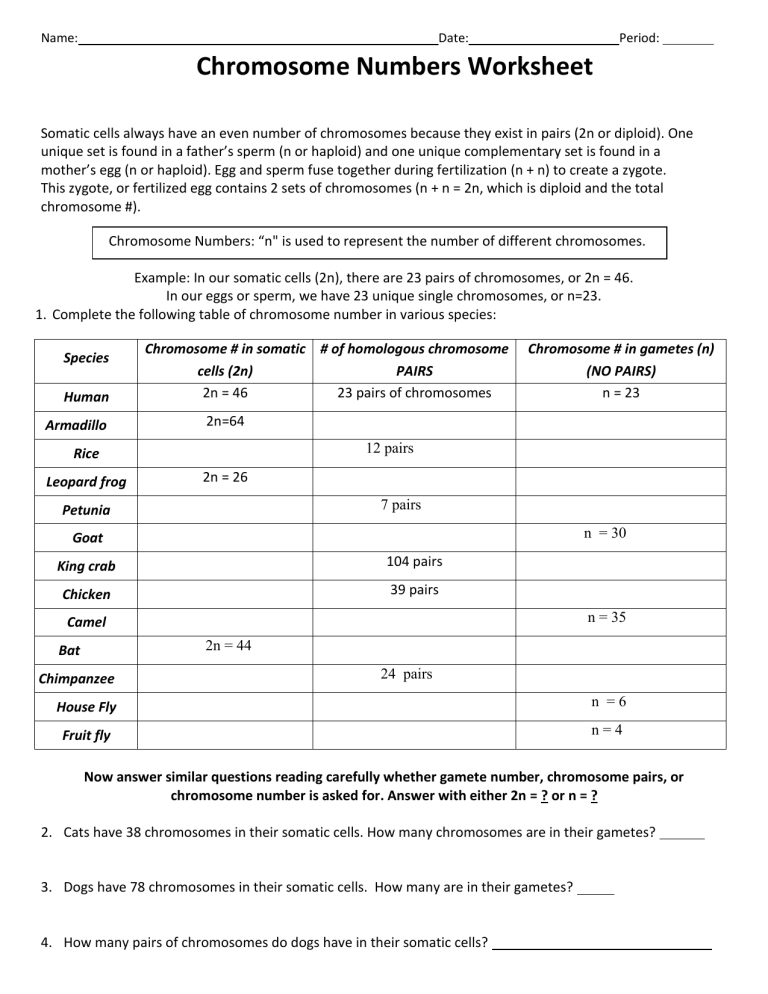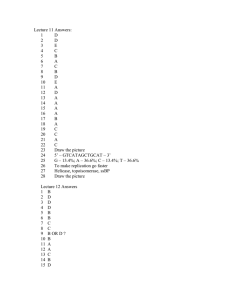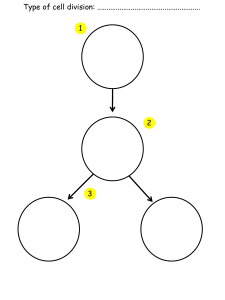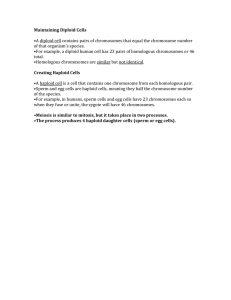Chromosome Numbers Worksheet
advertisement

Name: Date: Period: Chromosome Numbers Worksheet Somatic cells always have an even number of chromosomes because they exist in pairs (2n or diploid). One unique set is found in a father’s sperm (n or haploid) and one unique complementary set is found in a mother’s egg (n or haploid). Egg and sperm fuse together during fertilization (n + n) to create a zygote. This zygote, or fertilized egg contains 2 sets of chromosomes (n + n = 2n, which is diploid and the total chromosome #). Chromosome Numbers: “n" is used to represent the number of different chromosomes. Example: In our somatic cells (2n), there are 23 pairs of chromosomes, or 2n = 46. In our eggs or sperm, we have 23 unique single chromosomes, or n=23. 1. Complete the following table of chromosome number in various species: Species Human Armadillo Chromosome # in somatic # of homologous chromosome cells (2n) PAIRS 2n = 46 23 pairs of chromosomes 2n=64 12 pairs Rice Leopard frog Chromosome # in gametes (n) (NO PAIRS) n = 23 2n = 26 7 pairs Petunia n = 30 Goat King crab 104 pairs Chicken 39 pairs n = 35 Camel 2n = 44 Bat Chimpanzee 24 pairs House Fly n =6 Fruit fly n=4 Now answer similar questions reading carefully whether gamete number, chromosome pairs, or chromosome number is asked for. Answer with either 2n = ? or n = ? 2. Cats have 38 chromosomes in their somatic cells. How many chromosomes are in their gametes? 3. Dogs have 78 chromosomes in their somatic cells. How many are in their gametes? 4. How many pairs of chromosomes do dogs have in their somatic cells?



